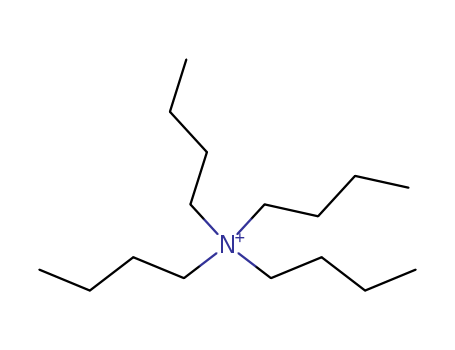- Chemical Name:Tetrabutylammonium
- CAS No.:10549-76-5
- Molecular Formula:C16H36BrN
- Molecular Weight:242.469
- Hs Code.:2923900090
- UNII:CBU2X6BBJR
- DSSTox Substance ID:DTXSID3045011
- Nikkaji Number:J91.255G
- Wikipedia:Tetrabutylammonium
- Wikidata:Q25323965
- Metabolomics Workbench ID:56635
- ChEMBL ID:CHEMBL1236196
- Mol file:10549-76-5.mol
Synonyms:Bu(4)NBr;tetra-n-butylammonium dodecylsulfate;tetra-n-butylammonium hexafluorophosphate;tetrabutylammonium;tetrabutylammonium azide;tetrabutylammonium bromide;tetrabutylammonium chloride;tetrabutylammonium cyanide;tetrabutylammonium fluoride;tetrabutylammonium hydrogen sulfate;tetrabutylammonium hydroxide;tetrabutylammonium iodide;tetrabutylammonium monophosphate;tetrabutylammonium nitrate;tetrabutylammonium perchlorate;tetrabutylammonium sulfate;tetrabutylammonium sulfate (1:1), sodium salt



 Xi:Irritant;
Xi:Irritant;

